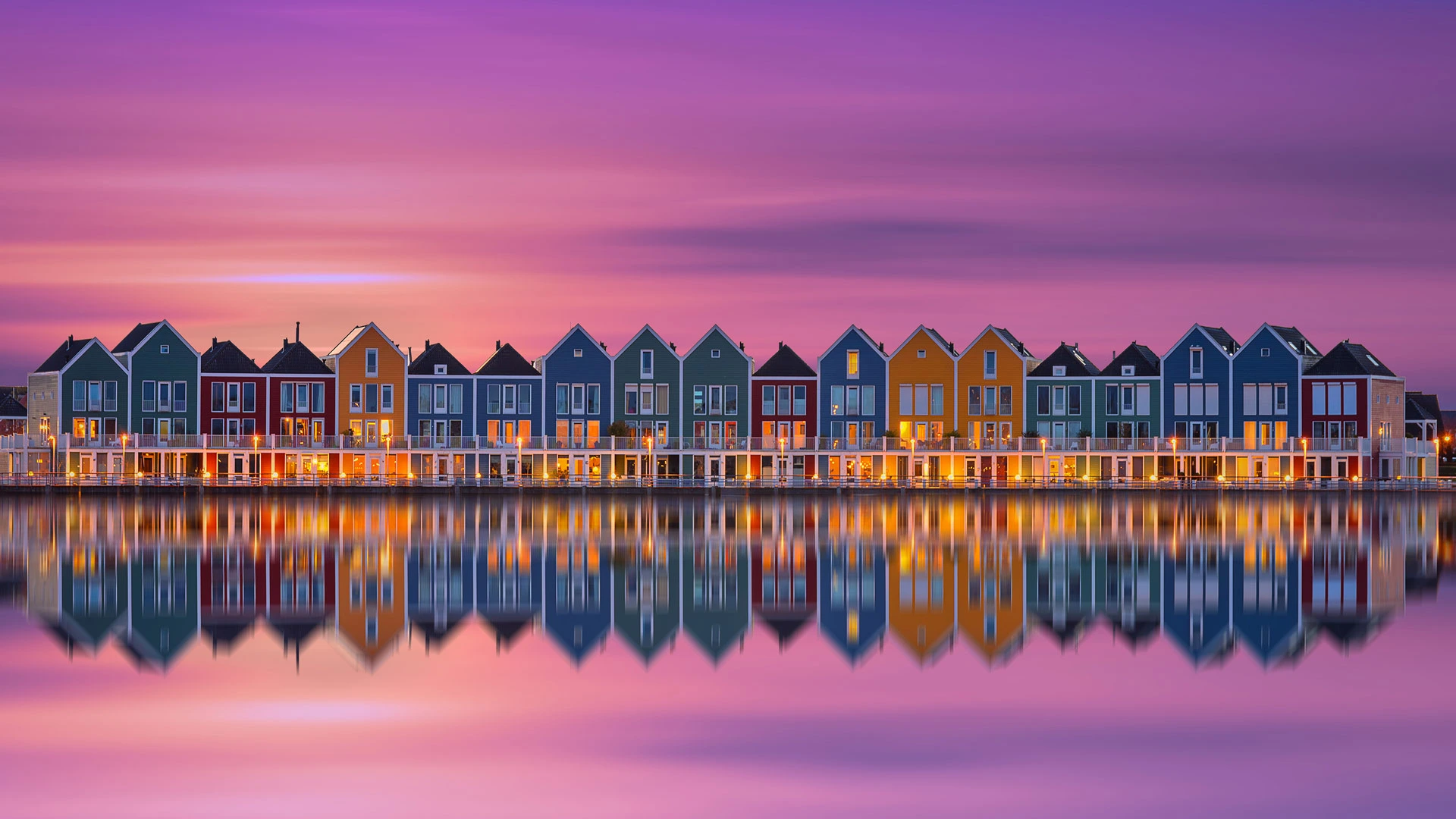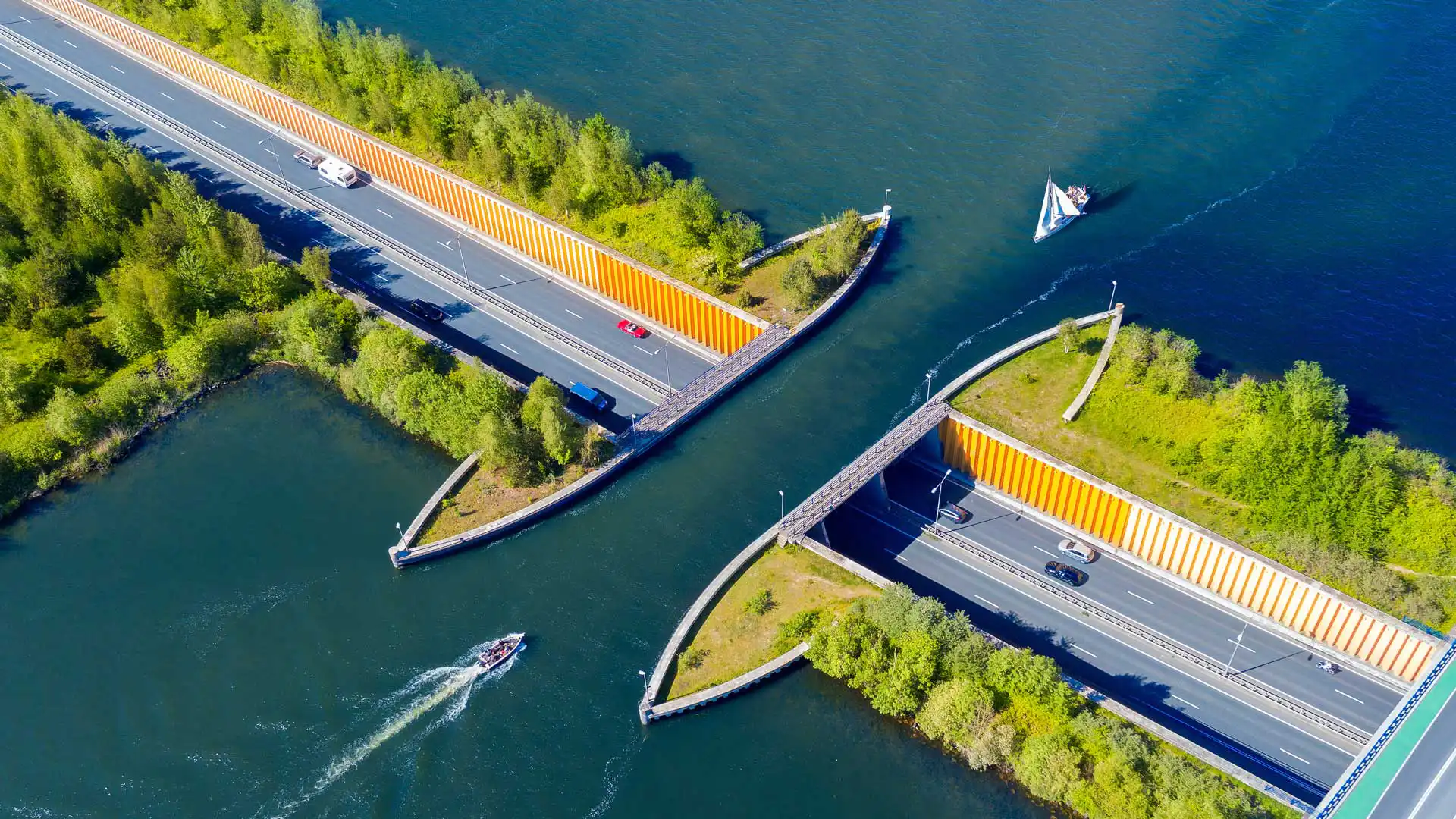豪滕镇的彩虹屋, 荷兰 The Rainbow Houses of Houten, Netherlands (© George Pachantouris/Getty Images)
豪滕镇的彩虹屋, 荷兰 The Rainbow Houses of Houten, Netherlands (© George Pachantouris/Getty Images)
彩虹骑行与宁静氛围 Rainbow rides and quiet vibes
彩虹屋,荷兰豪滕
你不会找到纪念品商店或旅游地图指引方向——但沿着豪滕的里特普拉斯湖畔,你会偶然发现荷兰最令人意想不到的上镜景点之一。虽然许多人涌向阿姆斯特丹的运河或鹿特丹的方块屋,但这座宁静的通勤小镇却拥有独特的建筑风格。彩虹屋如海市蜃楼般鳞次栉比,闪耀着大胆的绘画色彩——一个住宅区变成了一个低调的文化地标。
对当地人来说,它们只是日常生活的一部分。但对于摄影师和设计爱好者来说,它们是色彩饱和、对称的梦幻景观。该建筑群由汉斯·比恩 (Hans Been) 设计,于 2005 年竣工,将加勒比海风情与北欧的内敛风格融为一体,呼应了简约渔村的面貌。每栋房子都反射出不同的色彩。这不是一个精心策划的旅游景点;这些都是有人居住的住宅,它们所在的社区也经过了同样周到的规划,而豪滕正是凭借这种规划成为全国最适合骑自行车的城镇之一。从湖对岸或附近的桥上欣赏这些色彩鲜艳的建筑外观最为理想,它们就像一个秘密,只有在合适的光线下才能幸运地捕捉到:迷人、惊喜,而且低调得令人耳目一新。
The Rainbow Houses of Houten, Netherlands
You won't find souvenir shops or tourist maps pointing the way—but follow the edge of Lake Rietplas in Houten, and you'll stumble upon one of the Netherlands' most unexpectedly photogenic sights. While many flock to Amsterdam's canals or Rotterdam's cube houses, this quiet commuter town offers its own architectural twist. Lined up like a mirage, the Rainbow Houses shimmer in bold, painterly hues—a residential block turned an understated cultural landmark.
To locals, they're simply part of the daily backdrop. But for photographers and design lovers, they're a dreamscape of saturation and symmetry. Designed by Hans Been and completed in 2005, the ensemble blends Caribbean flair with Nordic restraint, echoing the look of a minimalist fishing village. Each house reflects a different color of the spectrum. This isn't a curated tourist stop; these are lived-in homes, part of a neighborhood shaped by the same thoughtful planning that makes Houten one of the most bike-friendly towns in the country. Best seen from across the lake or a nearby bridge, these vibrant facades feel like a secret you're lucky to catch in the right light: charming, surprising, and refreshingly under the radar.
郁金香,荷兰 Tulip fields in Netherlands (© 1111IESPDJ/Getty Images)

郁金香,荷兰 Tulip fields in Netherlands (© 1111IESPDJ/Getty Images)
盛放的美好时光 A blooming good time
郁金香,荷兰
从著名的郁金香花田到世界上最大的花卉拍卖市场,荷兰与郁金香的渊源悠久。有趣的是,郁金香的原产地并非荷兰。这些绚丽的花朵最早于 16 世纪末由奥斯曼帝国传入荷兰。到了 17 世纪,郁金香的价值飙升,甚至一颗郁金香球茎的价格曾超过一栋房屋。这一时期被称为“郁金香狂热”,常被视为是最早有记录的金融泡沫之一。1637 年价格崩盘后,许多人一夜破产,但荷兰人对郁金香的喜爱却从未消退。
最著名的郁金香花田,如今日图片中展示的壮观景象,主要分布在阿姆斯特丹郊外的博尔伦斯特雷克(花卉区)等地。红、黄、粉、紫等色彩斑斓的郁金香花海绵延至天际。另一处不可错过的赏花胜地是位于利瑟的库肯霍夫公园,这是世界上最著名的花卉公园,每年春天仅开放数周,展示超过七百万株花卉,包括稀有和异国品种的郁金香。公园的花卉设计每年都会变化,因此每次参观都会带来全新的体验。如果错过了郁金香的花期,也无需遗憾。荷兰的郁金香产业全年保持繁荣,这一点在阿尔斯梅尔花卉拍卖市场体现得尤为明显,作为全球最大的花卉交易市场,这里每天有数百万朵鲜花,包括郁金香,被买卖并运往世界各地,为无数家庭带去缤纷色彩和春天的气息。
Tulips, Netherlands
From famous tulip fields to the world's largest flower auction, the Netherlands and tulips go a long way back. Tulips didn't originate here. These beauties arrived in the country in the late 16th century, brought from the Ottoman Empire. By the 17th century, they became so valuable that a single bulb could cost more than a house. This period, known as 'tulip mania,' is considered one of the first recorded financial bubbles. When prices crashed in 1637, fortunes were lost, but the love for tulips remained.
The most famous tulip fields, like the ones pictured here, are found in regions such as the Bollenstreek (Bulb Region), just outside Amsterdam. Rows of red, yellow, pink, and purple stretch as far as the eye can see. Then there's Keukenhof, in Lisse, the world's most famous flower park, open only for a few weeks each spring. It showcases over 7 million flowering bulbs, including rare and exotic tulip varieties. The designs change every year, so no two visits are ever the same. If you miss the bloom, don't worry—the Netherlands keeps its tulip industry thriving year-round. The Dutch take their tulips seriously, and nowhere is this more evident than at the Aalsmeer Flower Auction, the largest flower market in the world. Here, millions of flowers, including tulips, are bought and sold daily, making their way to homes across the globe.
瓦登海沿岸,莫德加特附近,弗里斯兰,荷兰 Wadden Sea coast, near Moddergat, Friesland, Netherlands (© Ron ter Burg/Minden Pictures)
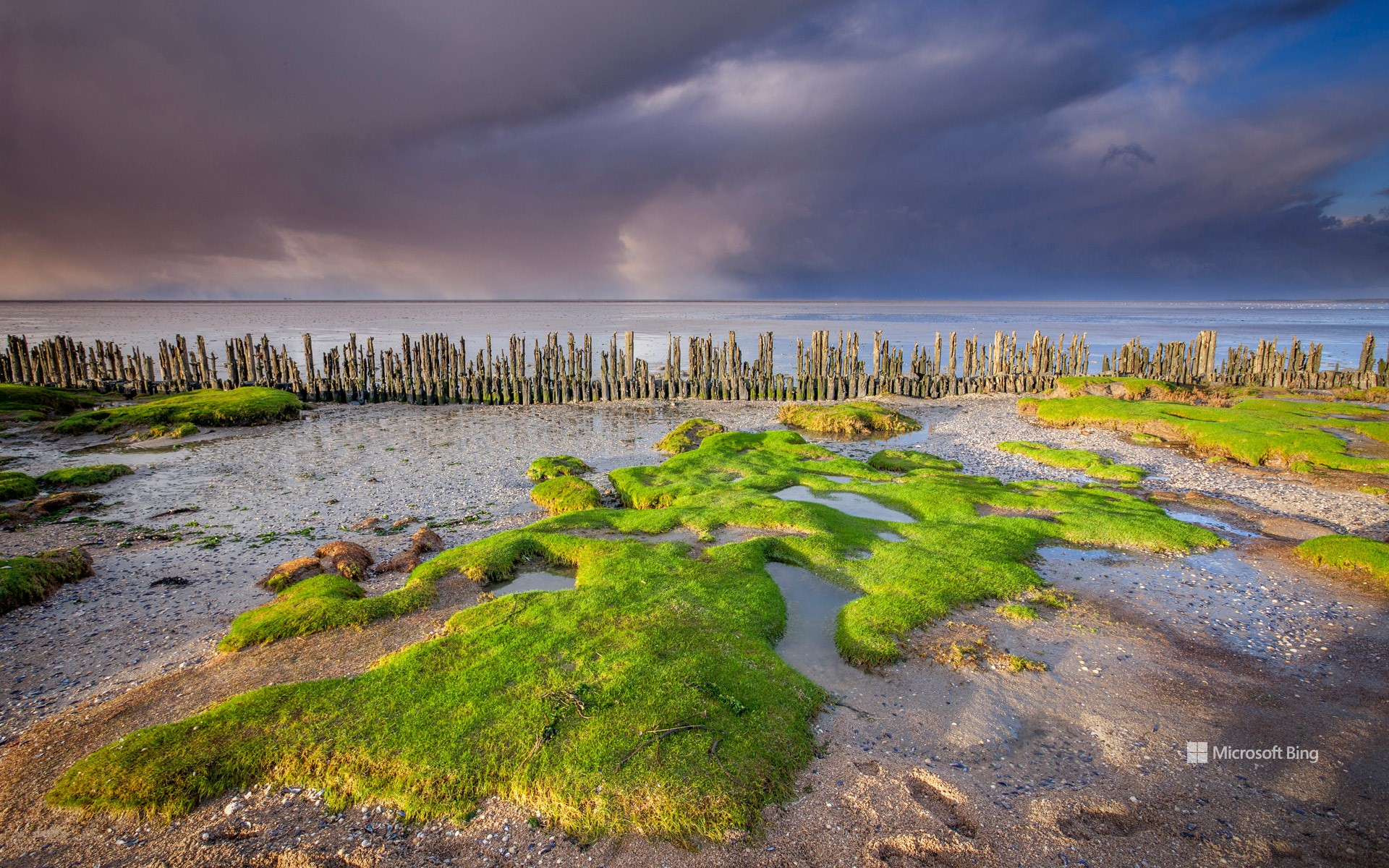
瓦登海沿岸,莫德加特附近,弗里斯兰,荷兰 Wadden Sea coast, near Moddergat, Friesland, Netherlands (© Ron ter Burg/Minden Pictures)
泥土、大海和天空 Mud, sea, and sky
瓦登海沿岸,弗里斯兰,荷兰
如果你曾经想过在水上漫步,或者在接近水面的地方行走,瓦登海就是你的理想之地。沿着荷兰、德国和丹麦的海岸绵延300多英里,这个联合国教科文组织认定的世界遗产拥有独特的滩涂和湿地景观。事实上,它是世界上最大的完整潮间带(即涨潮时在水下,退潮时露出水面的沙地和泥滩)。该地区既是突唇白鲑、褐鳟和白喙斑纹海豚等水生物种的游乐场,也是涉禽和苍鹭等鸟类的栖息地。
图为荷兰弗里斯兰的瓦登海岸。这片海岸遍布着迷人的渔村和中世纪教堂。在这里,泥滩徒步旅行是一种娱乐消遣,瓦登海是一个很受欢迎的目的地。当潮水退去时,泥滩徒步旅行者可以在海床上行走,踩着泥浆,涉过浅水。无论你是想挑战瓦登海,还是想探寻海豹的踪迹,这里都能为你提供丰富的探险活动。只是别忘记带上一双可以在泥滩中行走的靴子!
Wadden Sea coast, Friesland, Netherlands
If you've ever dreamed of walking on water, or something close to it, the Wadden Sea is the place for you. Tracing over 300 miles along the coast of the Netherlands, Germany, and Denmark, this UNESCO World Heritage Site offers a unique landscape of tidal flats and wetlands. In fact, it is the world's largest unbroken intertidal zone—underwater at high tide and exposed at low tide—of sand and mud flats. The area is also a playground for aquatic species such as houting fish, brown trout, and white-beaked dolphins, and is home to birds like waders and herons.
Pictured here is the Wadden Sea coast in Friesland, Netherlands. This coast is dotted with charming fishing villages and medieval churches. Mudflat hiking is a recreational pastime here—the Dutch call it wadlopen. As the tide recedes, mud-trampers can walk across the seabed, squishing through the mud and wading through shallow waters. Whether you're up for a wadlopen challenge or a seal-spotting safari, there's plenty of adventure to be found here. Just don't forget your boots—things are bound to get a little messy!
旧西街区,阿姆斯特丹 ,荷兰 Oud-West neighborhood, Amsterdam, Netherlands (© George Pachantouris/Getty Images)
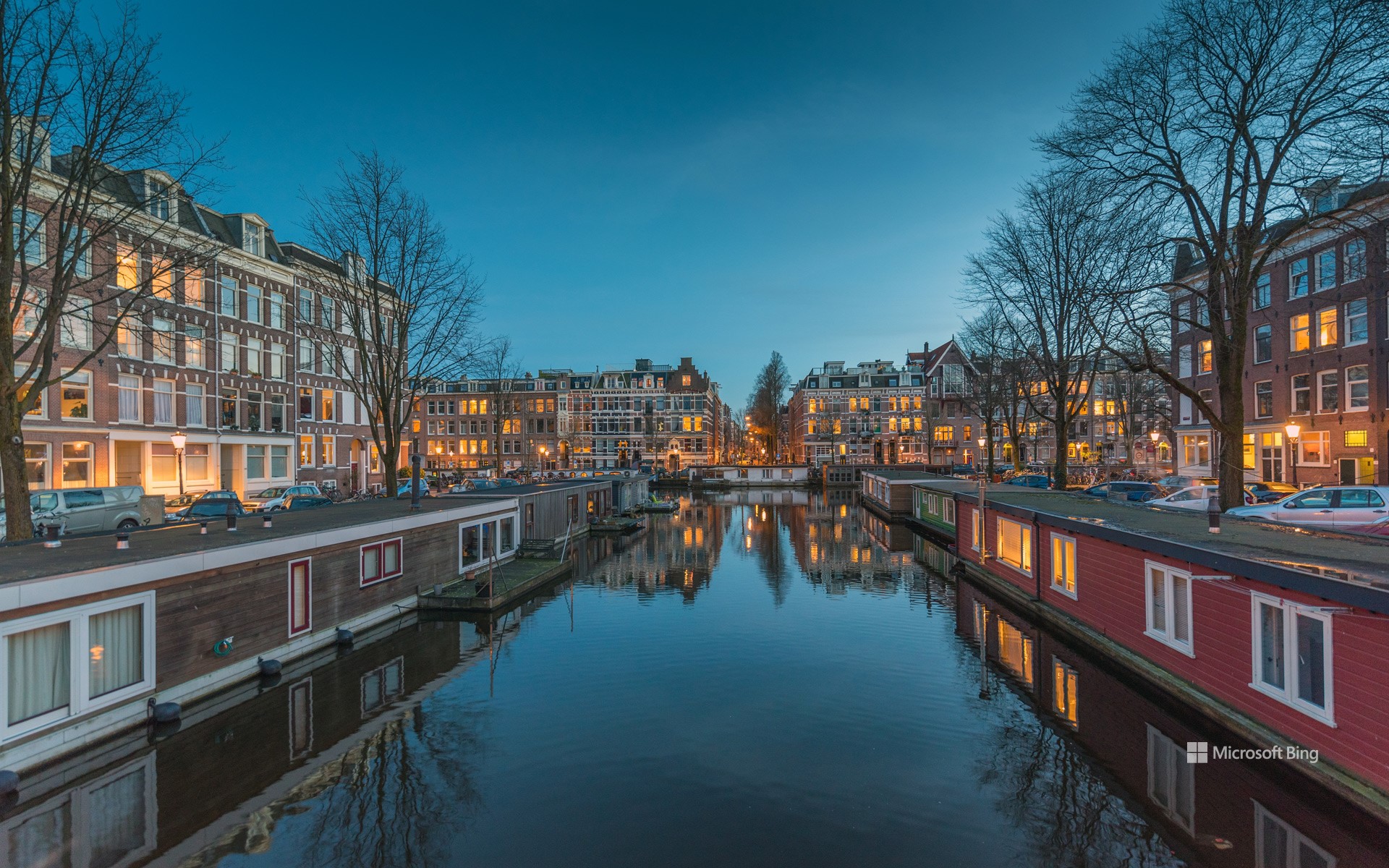
旧西街区,阿姆斯特丹 ,荷兰 Oud-West neighborhood, Amsterdam, Netherlands (© George Pachantouris/Getty Images)
旧西街区的故事 Oud-West side story
旧西街区,阿姆斯特丹 ,荷兰
欢迎来到阿姆斯特丹!荷兰首都阿姆斯特丹以其历史悠久的运河、多姿多彩的建筑和悠闲自在的氛围吸引着来自世界各地的游客。这座城市的历史可以追溯到12世纪,当时它还是阿姆斯特尔河畔的一个渔村。如今,阿姆斯特丹拥有梵高博物馆、EYE电影博物馆和国家海事博物馆等机构,让人们可以深入了解阿姆斯特丹的历史和艺术遗产。阿姆斯特丹的同心圆型运河区建于17世纪,已被联合国教科文组织列为世界遗产。此外,这座城市还拥有众多的餐馆、古董店和露天市场,图片上展示的旧西街区就是其中之一。准备好骑自行车吧,因为阿姆斯特丹的自行车文化无处不在。阿姆斯特丹拥有约320英里长的自行车道,是世界上最适合骑自行车的城市之一。
Oud-West, Amsterdam, Netherlands
Welcome to Amsterdam! The capital of the Netherlands charms visitors with its historic canals, versatile architecture, and laid-back vibe. The city's history can be traced back to the 12th century when it was a fishing village on the banks of the Amstel River. Institutions like the Van Gogh Museum, the Eye Film Museum, and the National Maritime Museum offer insights into its history and arts legacy. Amsterdam's canal ring area, built at the turn of the 17th century, is a UNESCO World Heritage Site. The city is also home to its fair share of restaurants, vintage shops, and outdoor markets in neighborhoods like Oud-West, pictured in today's image. Get ready to pedal because Amsterdam's cycling culture is ubiquitous. With approximately 320 miles of bike lanes, it's one of the most bike-friendly cities in the world.
费吕沃湖水道桥,荷兰 Veluwemeer Aqueduct, Netherlands (© Frolova_Elena/Shutterstock)
费吕沃湖水道桥,荷兰 Veluwemeer Aqueduct, Netherlands (© Frolova_Elena/Shutterstock)
一年已过半 We're halfway there
一年已过半
平年有365天,今天恰好是中间日,也就是平年的中间点。中间日,在平年的7月2日的中午开始,在闰年的7月2日的午夜开始。2023年是平年,所以你去吃午饭的时候正好是一年的中间点哦。
图上是荷兰的费吕沃湖水道桥。这座水道桥于2002年完工,采用了一种与众不同的设计:它没有让车辆直接横穿费吕沃湖,而是修建了一条水下隧道供汽车从水下通行,这样船只也可以自由地在水面通行了。这条隧道的两边都有人行横道,连接着大陆和世界上最大的人工岛弗莱福兰岛。工程师们本可以建造出一个只满足部分行人需求的东西,但是他们却找到了一个适用于所有人的解决方案。
It's Halfway Day!
Today is Halfway Day, which means we are halfway through 2023! Halfway Day begins at noon on July 2 during a regular 365-day year, and at midnight on July 2 during a leap year—so this year, we're celebrating at lunchtime.
Dutch engineers don’t do things by halves. Pictured here is the Veluwemeer Aqueduct in the Netherlands. The project, completed in 2002, used an unusual engineering approach. Rather than a drawbridge or ferry to get cars over Lake Veluwemeer, engineers instead built this 'water bridge' to carry boats across the road. The N302 is a busy highway connecting the mainland to the province of Flevoland, and thanks to this design, both road and waterborne traffic can keep flowing freely. The aqueduct also has pedestrian crossings on both sides, so everyone benefits. No half measures were taken in designing an eye-catching transport solution that works for everyone.
金德代克风车群,荷兰 Windmills, Kinderdijk, Netherlands (© Achim Thomae/Getty Images)
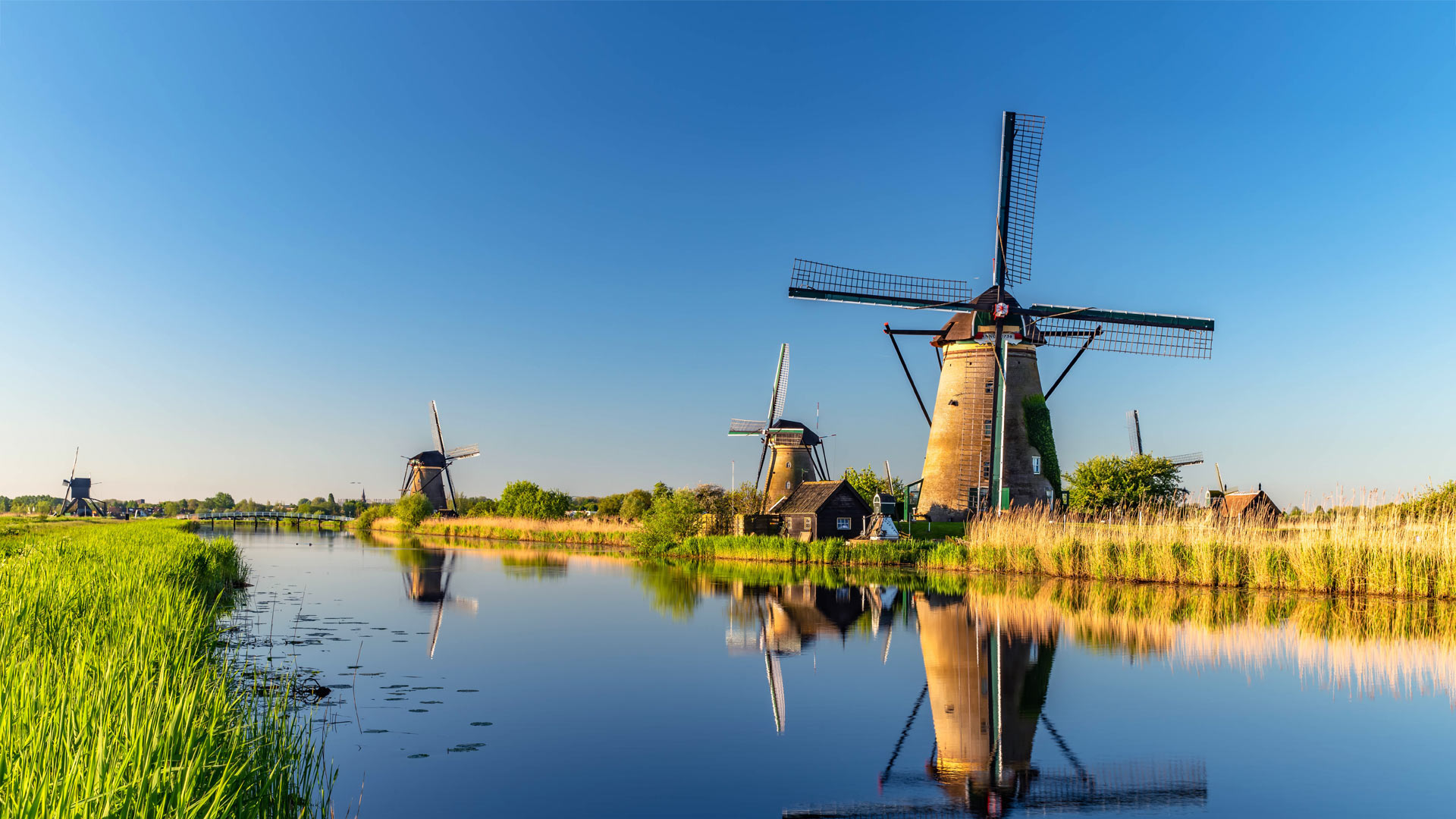
金德代克风车群,荷兰 Windmills, Kinderdijk, Netherlands (© Achim Thomae/Getty Images)
可靠的移水器 Trusty water-shifters
Windmills in Kinderdijk, the Netherlands
This stretch of windmills is one of the best-known Dutch tourist sites—you probably recognize them from postcards and calendars. Both iconic and historic, the windmills in the village of Kinderdijk have been a UNESCO World Heritage Site since 1997. The Netherlands has about 1,200 windmills, though only 300 or so are still operational. Over the years they've played a major role in pumping sea water away from the nation's reclaimed land. Keeping the water at bay is a perennial issue for the flat 'low countries,' where much of the ground is below sea level.
The second Saturday in May—today!—is National Windmill Day in the Netherlands, when windmills all over the country open their doors to visitors, letting locals and tourists alike marvel over the simple yet highly effective inner workings. And of course, though wind is a force of nature that's been harnessed for centuries, it's having a resurgence, albeit in a more high-tech form. It's a leading producer of 'green' energy and is expected to grow dramatically in the coming years. So, on National Windmill Day, let's tip our hats to these sturdy ancestors while also cheering the pioneering work of the sleek, graceful new generation.
荷兰金德迪克的风车
这段风车是荷兰最著名的旅游景点之一,你可能从明信片和日历上就能认出它们。Kinderdijk村的风车既是标志性的也是历史性的,自1997年以来一直是联合国教科文组织的世界遗产。荷兰约有1200座风车,但仍在运营的只有300座左右。多年来,他们在将海水从国家填海区抽走方面发挥了重要作用。对于地势平坦的“低海拔国家”,保持海水不受影响是一个长期存在的问题,那里的大部分土地低于海平面。
今天是五月的第二个星期六-是荷兰的国家风车日,全国各地的风车向游客敞开大门,让当地人和游客都惊叹于简单但高效的内部工作。当然,尽管风是一种自然力,已经被利用了几个世纪,但它正在复兴,尽管是以更高科技的形式。它是“绿色”能源的主要生产商,预计未来几年将大幅增长。因此,在全国风车日,让我们向这些强壮的祖先致敬,同时也为时尚优雅的新一代的开拓工作欢呼。
Lauwersmeer国家公园上空的椋鸟群,荷兰 Starlings flock over Lauwersmeer National Park, Netherlands (© Frans Lemmens/Alamy)
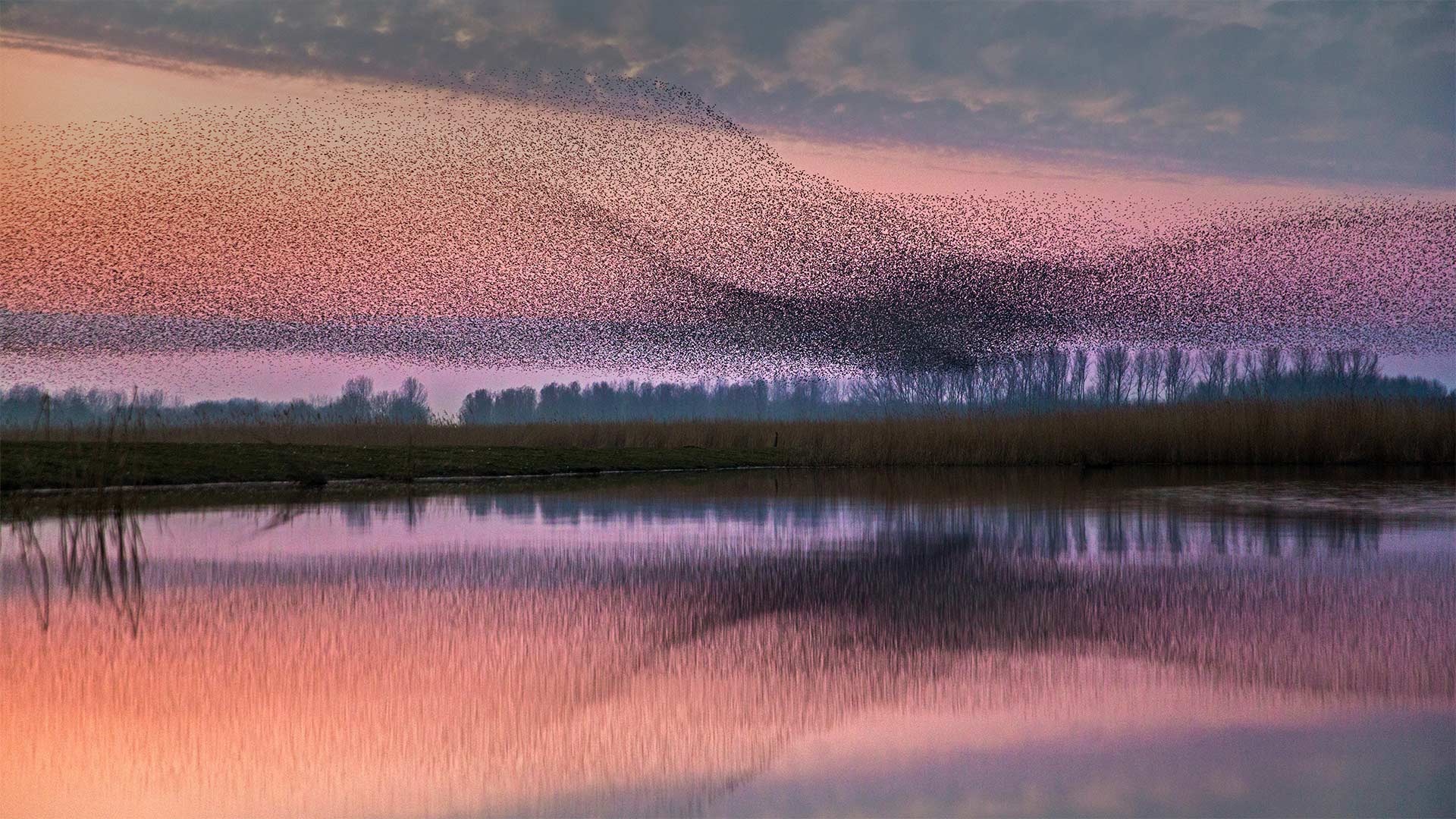
Lauwersmeer国家公园上空的椋鸟群,荷兰 Starlings flock over Lauwersmeer National Park, Netherlands (© Frans Lemmens/Alamy)
Moving as one
After the nesting and breeding seasons of spring and summer have passed, starlings become highly social birds, often gathering in flocks that number in the thousands. These flocks sometimes take the form of a murmuration—when the birds form a group large and dense enough that they appear to move together as a single organism, even if the movements seem arbitrary. Though scientists still don't quite understand how the individual starlings in a murmuration coordinate their tight, fluid formations, the behavior is thought to be a way to confuse predators.
Imagine if you're a falcon on the hunt and you see a small group of starlings—an easy meal if you catch one. But if the starlings spot the predator first, they may form a murmuration, swooping and diving as one, making it difficult for the falcon to isolate and hunt an individual starling.
Keukenhof in Lisse, Netherlands (© Jim Zuckerman/Getty Images)
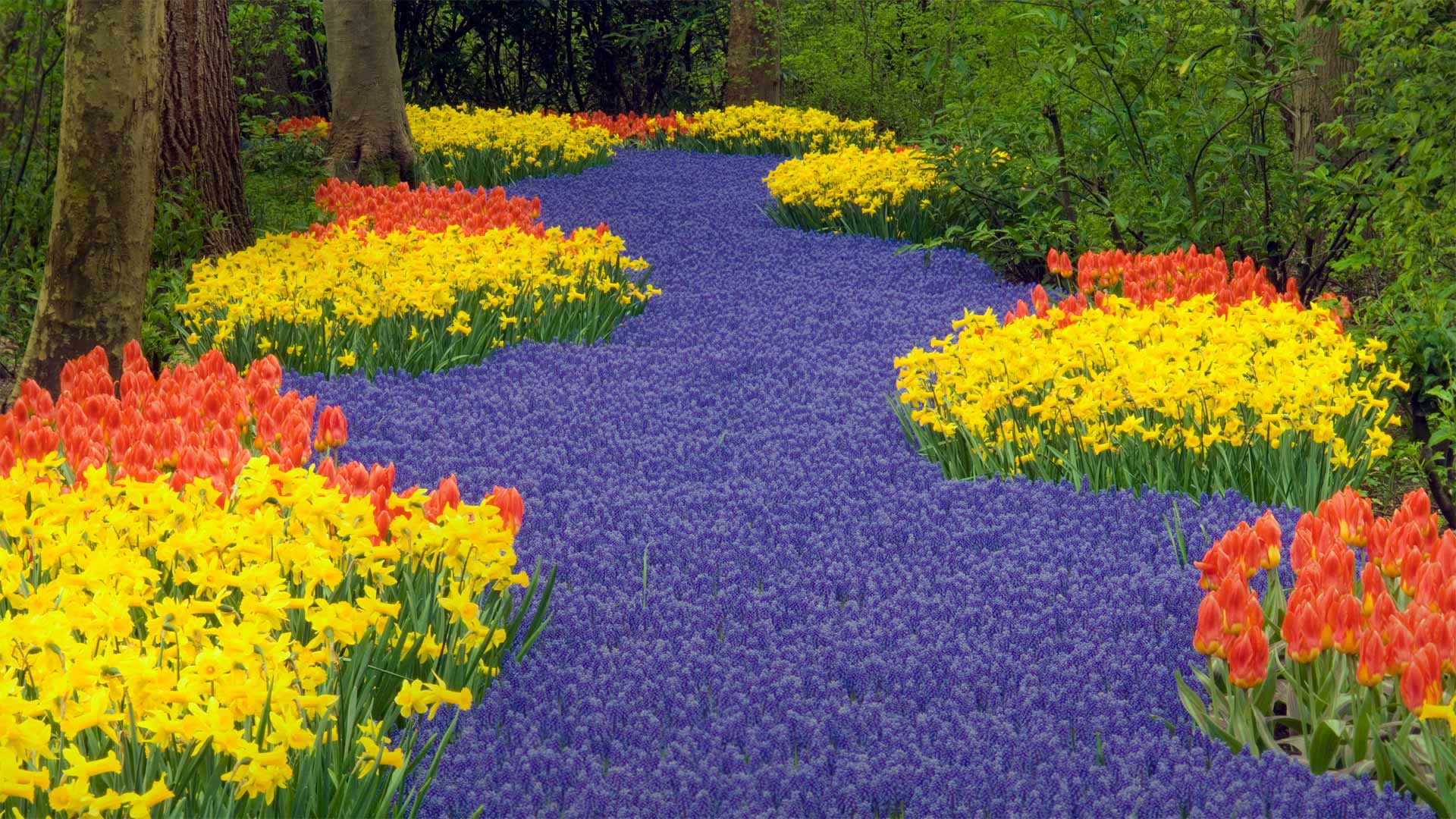
Keukenhof in Lisse, Netherlands (© Jim Zuckerman/Getty Images)
In the 'Garden of Europe'
Welcome to the ‘Garden of Europe’—a nickname given to this public flower garden in Lisse, Netherlands. The literal translation of 'keukenhof'—from Dutch to English—is 'kitchen court,' as the original grounds for the park and flower garden began as a vegetable garden for the royal residents of Keuken Castle during the 15th century. This prompted another nickname for the pastoral spot: 'kitchen garden.'
Most years, the flower garden opens for just eight weeks each spring to take advantage of the blooming tulips, daffodils, and other flowers. But on March 23, 2020, the Dutch government canceled all public events in an effort to stop the spread of the coronavirus. However, because so much effort goes into the careful planning and planting of the garden, the staff of Keukenhof has vowed: 'If people cannot come to Keukenhof, we will bring Keukenhof to the people.' They'll be sharing video and images of this year's garden via various 'online channels.'
Skating on a frozen canal near the windmills at Kinderdijk in the Netherlands (© Lourens Smak/Alamy)

Skating on a frozen canal near the windmills at Kinderdijk in the Netherlands (© Lourens Smak/Alamy)
'Winterpret' on ice
These skaters in the village of Kinderdijk are embracing 'winterpret,' a Dutch word that means 'winter joy' or 'winter fun.' Whenever temps drop low enough, many locals take to the ice and skate away on a complex network of canals. These waterways were built centuries ago—along with pumps, dykes, and the windmills pictured here—to protect the village of Kinderdijk by diverting water from the land. It's an important job, since Kinderdijk, like much of the Netherlands, lies below sea level and flooding is a major problem. Nowadays a modern water management system with multiple pumping stations does the work, and the windmills are left with a new job–to maintain an iconic Dutch scene. In 1997, the Kinderdijk windmills were designated as a UNESCO World Heritage site.
荷兰阿姆斯特丹附近赞瑟斯汉斯村里古老的风车 Historic windmills of Zaanse Schans near Amsterdam, Netherlands (© Matt Cooper/Gallery Stock)
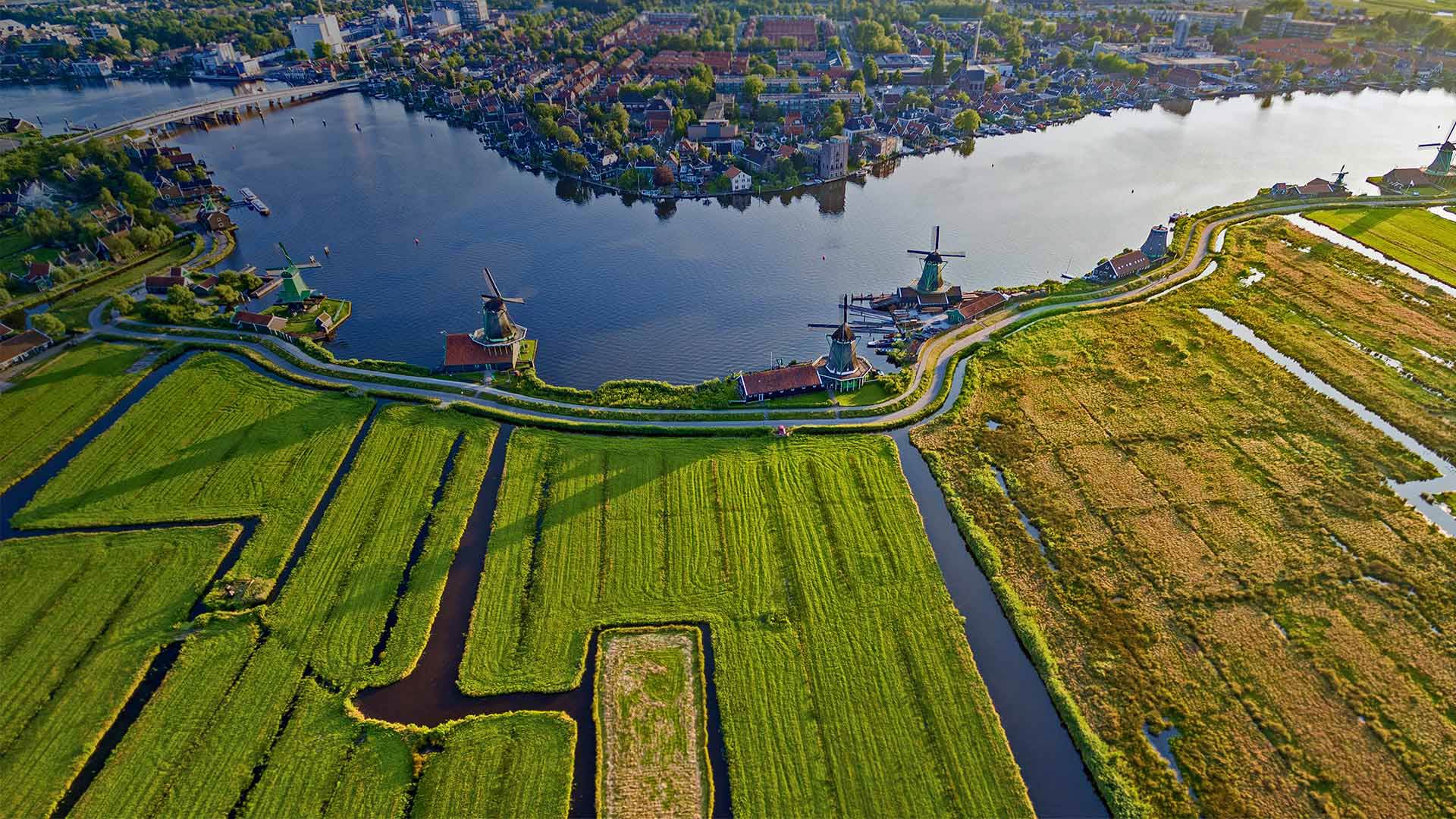
荷兰阿姆斯特丹附近赞瑟斯汉斯村里古老的风车 Historic windmills of Zaanse Schans near Amsterdam, Netherlands (© Matt Cooper/Gallery Stock)
Bringing together history and technology
On the second Saturday in May, the Dutch celebrate an iconic national structure—the windmill—like these historic ones at Zaanse Schans. With hundreds of windmills across the country, many sites use the day to demonstrate how windmills work and host art exhibits. But the concept of using wind power isn’t just a historical anecdote—this renewable energy is experiencing a boom, and by 2050 is predicted to provide one-third of the world's electricity.
